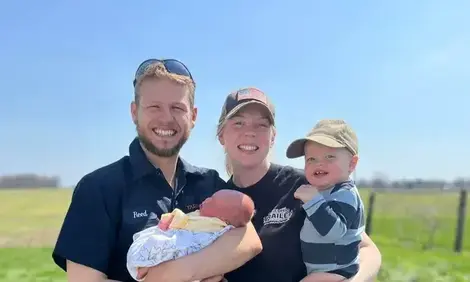



Where Halloumi Cheese Comes From
Cypriot dairying takes place in a land of extreme temperatures where a rapidly developing sector is underpinning a £90 million a year cheese segment.Little pasture brings challenges and opportunities, as does the seasonal uplift in population as holidaymakers flock to the island.
Livestock lecturer Stuart Lumb writes that part of any vacation experience is trying new food. This culinary experience is then exported and specialities enjoyed abroad are then wanted at home.
Halloumi cheese is a favourite Cypriot cheese, made at home in the past, but with the advent of tourism Halloumi cheese is now a big export earner, bringing in £85-95 million a year, and increasing by 10 per cent annually.
Then again folk who have not holidayed in Cyprus might struggle to tell you where this cheese originates from. This might soon change as the Cypriot government has obtained “protected designation of origin” for this cheese, similar to the status of Parma ham in Italy.
Cyprus has a human population of around 1million, although this swells dramatically in the summer as tourists flock to the island, many now coming from Russia. Consequently liquid milk demand fluctuates considerably depending on the time of year, whereas Halloumi demand is relatively stable.
There are a number of dairy cattle advisers on the island, mainly male. Carolina Kyriacou has a BSc from Newcastle University, England and a Master’s from Wageningen University,Netherlands.
“Women advisers are pretty rare in farming” commented Carolina. "Because the tradition has been that this is a man’s job. I am trying very hard to change this and am slowly but surely succeeding."
"Vets in Cyprus tend to adopt the “fire brigade” philosophy to treat cow problems but I want to develop preventative programmes for the dairy farmers.”
Carolina has been working as an independent adviser and is delighted to have a growing number of clients.
Essentially Middle East
Cyprus is to all intents and purposes a Middle East country and hence cows are zero grazed, plus water shortages are quite commonplace.The heat naturally affects cows’ appetite and subsequently milk yields and conception rates, when temperatures can hit 40c (104 degrees F) in summer.
Andreas Themistokleous started backyard farming with 5 cows 30 years ago and now milks 65 Holsteins.
Carolina has been advising Andreas for only 5 months but is delighted as has not only seen the herd average yield steadily to increase but has seen noticeable improvements in health and profitability.
Organic trace elements cured a past laminitis issue. Andreas rents land on which he grows forage crops, wheat, barley, triticale and oats. A problem specific to Cyprus concerns water. Because it is in such short supply waste water from homes is used to irrigate crops and harmful bacteria in the water can infect the cows, through these bacteria contaminating forages in particular. Drought conditions have meant that straw has had to be imported from Italy and Spain at a cost of €190 / tonne.
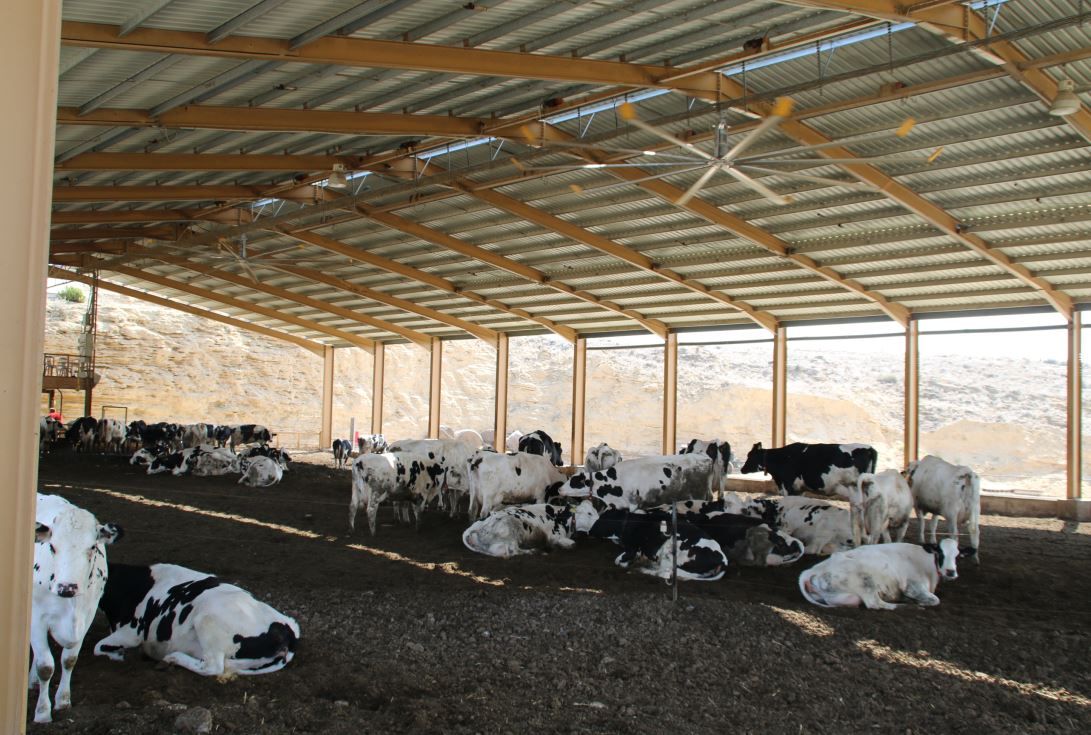
Andreas’ cows are zero grazed and milked twice daily through a traditional herringbone parlour and Andreas employs an Indian worker to help with the cows, whilst Andreas looks after the crop production.
Cows are Brucella free and mastitis is not a problem. Females are vaccinated against BVD and IBR , in a combined injection.
Milk is sold to a coop with payment being based on fat, protein and somatic cell count, with yields averaging 23 litres during the summer. Heifers are served naturally whereas cows are artificially inseminated. On Carolina’s advice,Andreas , has adopted a “close up” period 20 days before calving.
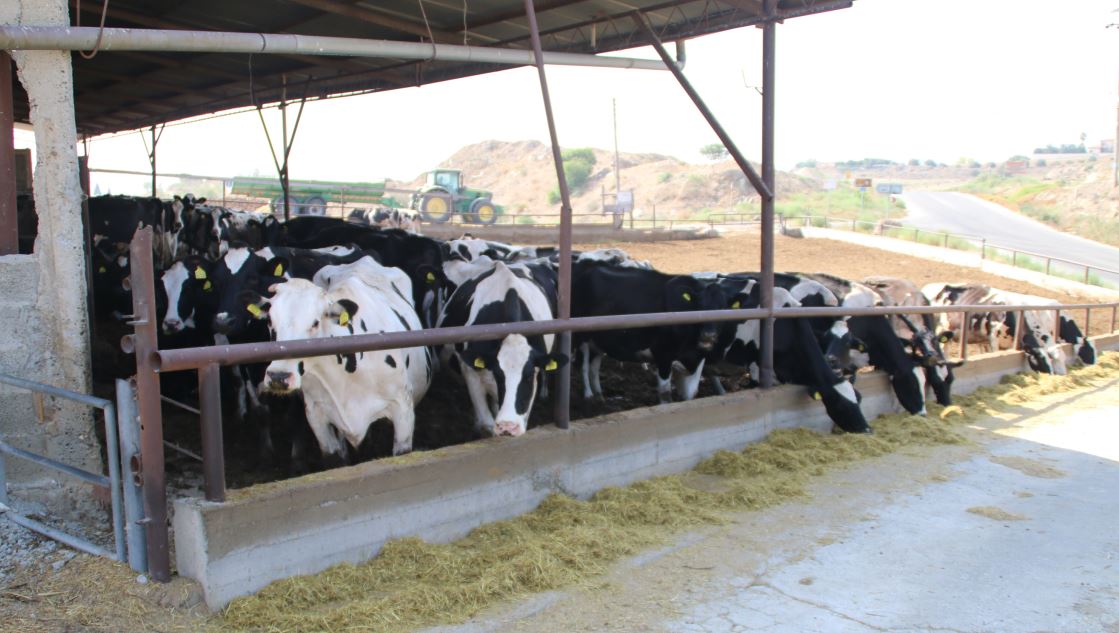
This involves a transition feeding from the dry period diet to the lactation, to boost calf growth. This feed includes carob meal, which is high in sugar and fibre. Carob meal is ground-down leguminous pods, which are the fruit of the carob tree.
Christodoulos Kouloumbris’ family were made homeless by the 1974 invasion of Cyprus by Turkey and his father re-started farming from nothing, with sheep and goats, on rented land, before building up a herd of dairy cows.
Christodoulos helped his father and uncle for many years but now farms on his own , having been in the same location for the last 13 years. “Today we have good vets, nutritionists and advisers, far better than a few years ago”.
Feeding and Milking Time
He has built his farm up and now has 55 Lactating Holstein cows and heifers, plus he rears the male progeny , uncastrated, until they are 12 months old. He has 38ha of his own land but this is not sufficient so he rents adjacent land and also buys in forage from other farms.
Silage made from greencrop wheat and barley has traditionally been fed, along with Sudan grass, but Christodoulos has been feeding corn silage for the last 2 years, using a Faresin(Italian) feed wagon. He is also feeding alfalfa silage.
There is a feed mill on the farm but in addition a special concentrate pellet is purchased from a local feed mill.The pellet is fed through the farm’s Lely robot, at the rate of 5.5kg per day, enticing the cows in to be milked. Heifers calve at 2 years of age and cows are generally culled after 6 lactations. Laminitis is not a problem. Christodoulos has recently started foot trimming for his cows, which he admits should have started some time ago.
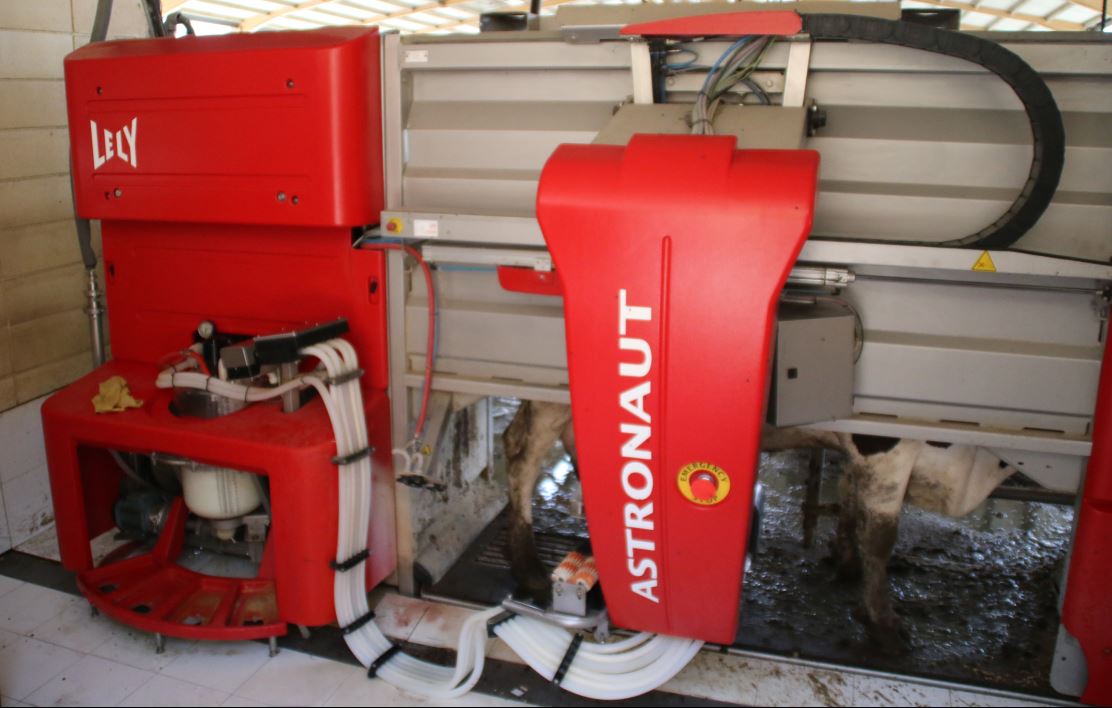
The lactating cows are all housed in a large high airy building and several huge fans in the roof keep the cows relatively cool plus a misting spray is positioned in front of a large rotary fan adjacent to the robot. Cows are bedded on dried manure which is turned daily with a grass tedder. The dry cows are housed in a separate shed, which allows them to be fed differently to the lactating cows.
A small 2 storey structure houses the bulk milk tank alongside a large elevated office which offers good views of the cows. The robot is situated directly under the office & bulk tank.
Payment and Components
Calving is all the year round and the herd’s average yield is 43 litres/ day. Carolina’s proud boast is that she has been able to raise the herd’s milk output by 25 per cent since she started working with Christodoulos, in spite of a slight infertility problem which was cured by using organic minerals. The robot’s computer is a mine of information which Carolina records on a spread sheet, for each individual cow and heifer.
During each visit Carolina collects dung samples which are analysed by sieving. The different amounts of residues shows how well ( or not ) the cows are digesting the feed and hence the feeding regime can be altered accordingly. Payment is based on fat , protein and somatic cell count. Milk quality is good and that is reflected in a price of 70p / litre.
Most dairy farmers only review their milk quality monthly as the data comes through with the milk cheque, but Christodoulos checks the milk quality several times each month so that feeding can be altered accordingly.
“In summer, because of the heat, the cows’ appetite drops plus the cows eat more concentrates as roughages generate heat in the rumen. This upsets rumen function resulting in reduced milk fat, which impacts on quality payments”.
Milk production has to stay within quota limits from November through April, but from May to October there are no penalties as milk consumption soars due to the seasonal influx of vacationing tourists.
Christodolous has his own contract with a local dairy and of course things are a little uncertain given that quotas are going in 2015. Currently 49 per cent of milk goes for halloumi cheese manufacture and getting “protected status” will benefit Cypriot dairy producers, although there are political issues to be resolved plus the protected status halloumi product will eventually have to contain far more goat and sheep milk than is currently the case.
This is because traditional halloumi cheese contains much more sheep and goat milk than the commercial halloumi cheese currently being marketed.
Dealing With the Brown Stuff
Manure is often still regarded as a nuisance and a waste product, although it contains valuable nutrients and is used as a natural fertiliser in many countries, in place of expensive bagged fertiliser.
One Cypriot dairy farmer, Nikos Vasili, has thought outside the box and hit upon the idea of producing compost from his cow manure and selling it to garden centres. In fact Nikos has done so well that he has won 2 awards from the government for his compost.
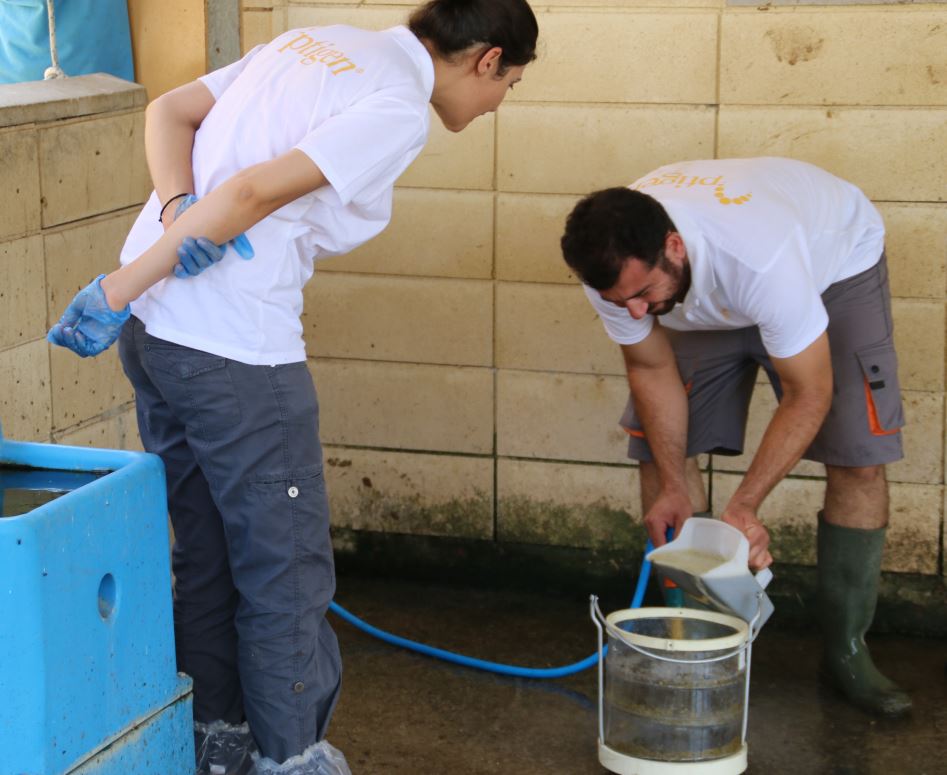
As is normal for Cyprus the cows are yarded and the manure is regularly collected by scrapers and runs by gravity into holding tanks. Then the liquid manure is pumped through a separator , splitting solids from liquids. With the high ambient temperatures the solid faction, which is quite friable, soon dries.
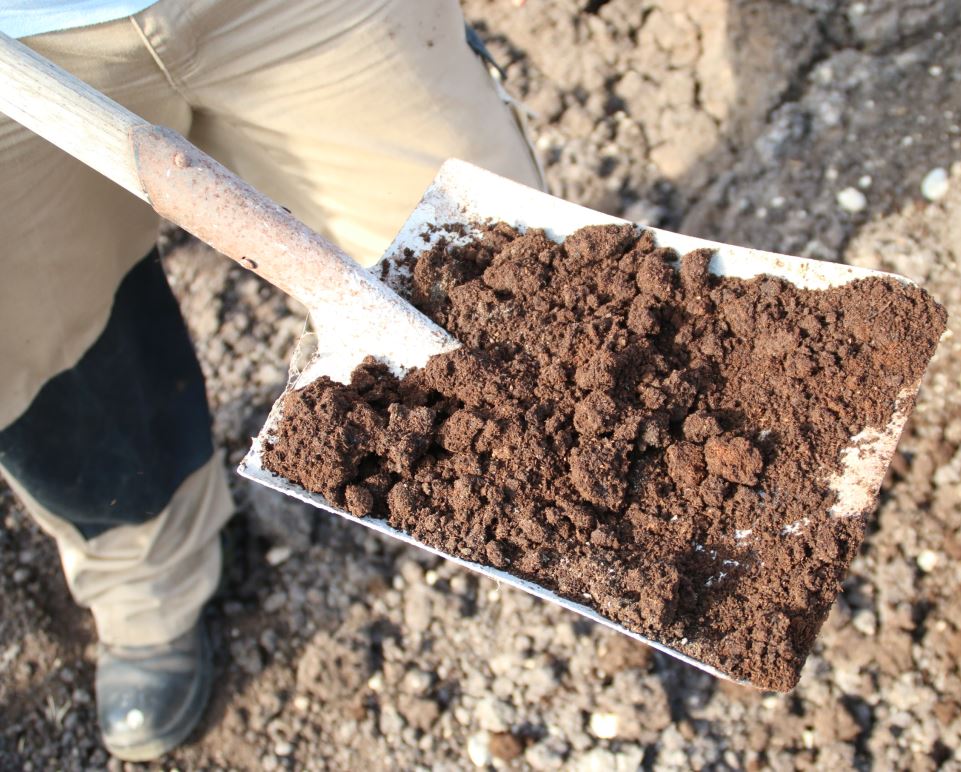
The manure is then spread out in rows and covered in a thick plastic sheet, to allow the composting to take place. The solids warm up and then eventually cool down, killing off any harmful pathogens in the process.
“Hardly surprisingly , other dairy farmers have attempted to make compost” commented Mr Vasili.
“But, their compost has caught fire plus have had problems making an acceptable product, which involves ensuring that the compost has a neutral pH.
"I originally looked at selling my compost in bags but find it’s more convenient to sell in bulk to a number of large local garden centres.
"Probably because of the Cypriot climate there is a pretty steady demand all the year round which is ideal, as obviously the cows are producing manure 365 days a year”.
Dairy farming in Cyprus can hardly be described as an easy occupation but with determination and science the industry can move forward.
(The author wishes to extend his sincere thanks to Carolina Kyriacou, without whom the visits to the above farms would not have been possible).
